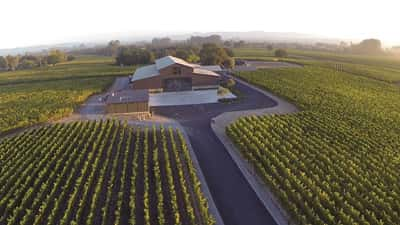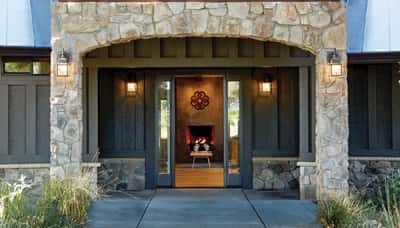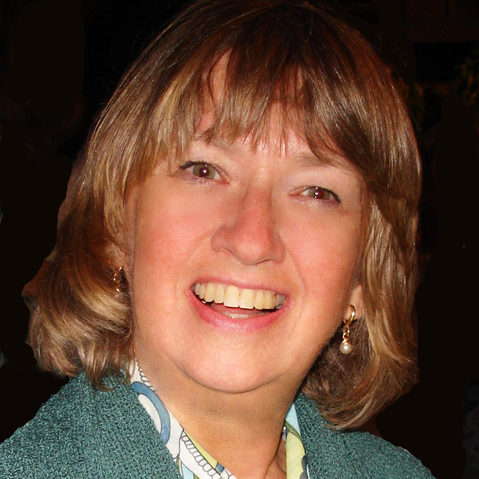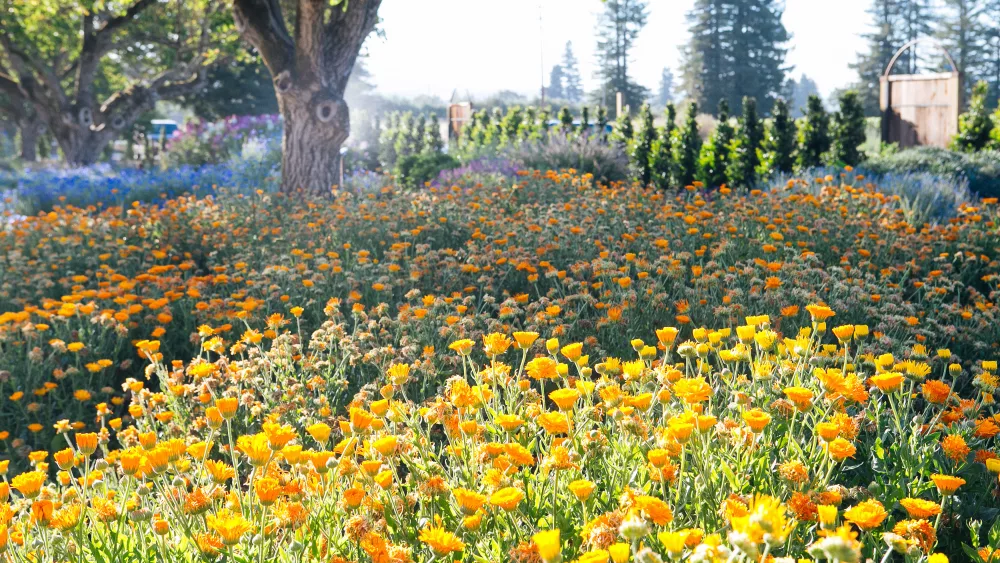 Silicon Valley Bank’s annual wine report is noted for giving an accurate picture of current trends, so when its State of the Wine Industry Report 2019 was unveiled in January last year, it included some unsettling news for vintners. After more than two decades of steady growth, sales had slowed significantly. The reason: as Baby Boomers settle into retirement, they’re adapting to living on fixed incomes and purchasing less wine. Although Millennials have all celebrated their 21st birthdays and surpassed boomers as the largest adult generation, they haven’t yet developed an appreciable enthusiasm for wine and aren’t picking up the slack as expected. The report predicted that the decline would continue for several years, and it challenged wineries to reverse the trend by rethinking their marketing strategies and finding better ways to effectively reach a new generation of potential consumers.
Silicon Valley Bank’s annual wine report is noted for giving an accurate picture of current trends, so when its State of the Wine Industry Report 2019 was unveiled in January last year, it included some unsettling news for vintners. After more than two decades of steady growth, sales had slowed significantly. The reason: as Baby Boomers settle into retirement, they’re adapting to living on fixed incomes and purchasing less wine. Although Millennials have all celebrated their 21st birthdays and surpassed boomers as the largest adult generation, they haven’t yet developed an appreciable enthusiasm for wine and aren’t picking up the slack as expected. The report predicted that the decline would continue for several years, and it challenged wineries to reverse the trend by rethinking their marketing strategies and finding better ways to effectively reach a new generation of potential consumers.
The author of the report is Rob McMillan, executive vice president and founder of Silicon Valley Bank Wine Division, who bases his findings on microeconomic, macroeconomic and behavior trends from the previous year. His research pinpointed several causes for the downturn. Conditions in 2018 were similar to those of the early 1990s, when Baby Boomers emerged as major consumers of wine. However, when the early Boomers began driving wine sales, they were in their mid-forties and prosperous, while today’s Millennials range in age from 22 to 37 and aren’t as well positioned financially. Many graduated from college in the midst of the Great Recession—from 2007-09—and as a result, they either started work in low-wage jobs that didn’t allow them to establish careers or opted for advanced education and took on substantial debt in student loans. They’re still catching up and don’t have the financial security that the generations preceding them had at the same point in their lives.
In contrast, Generation Xers, who range in age from 38 to 53 and are just ahead of the Millennials, graduated during the dot-com boom—from 1995 to 2001—and got off to a fast start. They have more disposable income and are demonstrating an interest in wine. As the SVB forecasts, “The Gen X cohort will surpass the Baby Boomers by about 2022 to become the largest fine-wine consumer demographic in the U.S.” Their purchases count, but at 50 million, they are a significantly smaller generation than either the Boomers or the Millennials, which both total 75 million, so they don’t have the strength in numbers to jump-start growth. If predictions about spending are correct, Millennials will only begin to show their buying power in 2026, suggesting that a reversal in the current trend will take considerable time. The report also identified further contributors to the slowdown as the legalization of cannabis in several states, which brought new competition, the popularity of craft beer and liquor and a negative message about alcohol’s impact on health, which overshadowed research showing wine’s benefits. The State of the Wine Industry 2020 report, released in January, confirmed the downward trajectory and identified hard seltzers as a new rival that’s claiming a significant share of the beverage market.
 Know your target
Know your target
It’s going to take a shift in approach for the wine industry to reach Millennials, and the first step is recognizing the generation’s unique characteristics. Juliana Colangelo, west coast director of Colangelo & Partners, a New York and San Francisco-based specialist in marketing for the wine and spirits industries, finds that for Millennials, wine is a lifestyle object rather than a status symbol. While luxury and impressive labels were important for Boomers, Millennials are more casual and most likely to connect with brands that fit their way of life. “They’re looking for more accessible labels and wines that are at a price point they can afford,” she says, explaining that they’re most often not buying wine for cellars. Rather, they’re purchasing a bottle to have with dinner the same night. And while they’re not looking for expensive wine, they do want wines that are well made and crafted, so marketing strategies require more than branding.
Lack of refined wine knowledge is also a factor in the Millennials’ reluctance to embrace wine. Looking at a lengthy wine list in a restaurant or row upon row of bottles in stores is overwhelming. “Wine is complicated to understand. It’s intimidating to choose a bottle,” says Colangelo. She explains that most Millennials are new to wine and don’t know which brands they like yet, so personal experiences play a role in their decision making. If they’ve traveled to Italy and visited a winery there, for example, they might buy a bottle from a Tuscan winery, because it brings back memories. She finds, therefore, that for Millennials, experiences and stories are more salient than taste profiles and tasting notes. She suggests more transparency, with wineries showing how they make their products and sharing stories about how wineries were founded and the people who work there.
 David Hewitt, hospitality manager at Benovia Winery in Santa Rosa, believes the key to luring Millennials is to engage them. He observes that wine has so many labels to choose from and such a wide price range, Millennials feel they can’t learn about it without spending a lot of money. As a result, they often opt for other beverages. “Cocktails and beer are cheaper and more accessible without a steep learning curve,” he says. Nonetheless, they want to learn about wine, but in a way that’s fun, without anyone talking down to them, so wineries need to draw them in by finding out what kind of experiences they’re seeking. If they’ve never seen how wine is made, Hewitt suggests taking them for a tour of the winery, letting them be part of the experience as opposed to just providing a tasting. “Keep them engaged,” he emphasizes. He’s discovered firsthand that it’s a successful approach and recently had a great time with Millennials who subsequently returned with their friends and requested that he host their tastings, even though he’s considerably older than they are.
David Hewitt, hospitality manager at Benovia Winery in Santa Rosa, believes the key to luring Millennials is to engage them. He observes that wine has so many labels to choose from and such a wide price range, Millennials feel they can’t learn about it without spending a lot of money. As a result, they often opt for other beverages. “Cocktails and beer are cheaper and more accessible without a steep learning curve,” he says. Nonetheless, they want to learn about wine, but in a way that’s fun, without anyone talking down to them, so wineries need to draw them in by finding out what kind of experiences they’re seeking. If they’ve never seen how wine is made, Hewitt suggests taking them for a tour of the winery, letting them be part of the experience as opposed to just providing a tasting. “Keep them engaged,” he emphasizes. He’s discovered firsthand that it’s a successful approach and recently had a great time with Millennials who subsequently returned with their friends and requested that he host their tastings, even though he’s considerably older than they are.
Another approach is hiring Millennials and Gen Xers to work in tasting rooms, allowing visitors to connect with wine professionals who are their peers. Ed Thralls, Benovia’s general manager, reports that James Matwijkow, the grandson of the winery’s founders, Joe Anderson and Mary Dewane, is learning all aspects of the wine business in the United States and also abroad. “He’s been a tremendous asset for us in the tasting room,” he says. He also finds that providing a place where guests can gather and become immersed in the Wine Country setting is an effective strategy. “Ultimately, experiences need to go beyond the simple wine bar tastings,” says Thralls, adding that Millennials practice frugal hedonism and might be willing to spend more for a memorable experience with friends. Also according to Thralls, Millennials are more interested in sustainability and social aspects than product details and enjoy tours that display Benovia’s artisanal approach to its business.
Matwijkow is a hospitality specialist at Benovia, and at age 28, he is perhaps best positioned to understand Millennials. He finds that they’re are eager to learn about wine, but not in a bar setting, so Benovia offers seated tastings in a former ranch house surrounded by the estate’s vineyards. He also points out that it’s well known that Millennials prefer to work for companies that stand for something meaningful, and he believes the same ethic applies to their social lives. “They want to visit a winery that stands for a purpose,” he says. He gives his grandparents’ trip to France in their World War II era airplane, The Spirit of Benovia, in June 2019 for the 75th anniversary of D-Day as an example. Along the way, Anderson and Dewane met World War II veterans and heard stories the veterans had never told before. They worked with winemaker and co-owner Mike Sullivan to create a Pinot Noir called Liberation, which raised funds to aid the transport of other historic aircraft to Europe for the D-Day celebration. Matwijkow tells Millennial visitors about his grandparents’ journey, and the story gets their attention. “The Millennial generation is a generation that cares,” he says. “They want to support small family wineries that stand for something, yet don’t take themselves too seriously.”
Changing directions
Another way to reach Millennials is to leave the tasting room and take the wine directly to them. JaM Cellars of Napa is a presenting sponsor of BottleRock Napa Valley, and it doesn’t stop there. It’s also been a sponsor of the Pilgrimage Festival in Tennessee, the Ohana Fest in Dana Point, Calif., and the Coral Sky Amphitheatre in West Palm Beach, Fla. The strategy is proving to be successful. “We’ve definitely found an audience in Millennials,” says Sarah Montague, chief marketing officer.
John and Michele Truchard are the J and M in JaM Cellars, which is part of the John Anthony Family of Wines, and they are Gen Xers. As they built their business, they had the foresight to identify who was drinking their wines and think about the future of the wine industry. They recognized that younger people were drinking wine the way previous generations enjoyed cocktails, and they launched JaM Cellars to provide wines consumers could drink in a similar fashion—anywhere, anytime and in a casual environment. “It took on the persona as being a wine that went beyond the dinner table,” says Montague. She explains that the Truchards enjoyed going to BottleRock, and it made sense for JaM Cellars to become a sponsor. Millennials go to events and value experiences, especially social events with their friends, so offering wine at music festivals gives them the opportunity to try it in places where they want to be. “We can actually get wine into people’s hands and get them to create moments and memories,” she explains. Later, when they visit stores, the wine aisle brings back memories because there’s a brand connection that prompts them to recall the experience.
John Truchard points out that many of the current wine brands were designed for the Boomer generation, and he believes the more successful wineries became, the less they focused on the future. As a result, they weren’t looking at younger consumers. JaM Cellars isn’t targeting one specific generation; the ultimate goal is to produce great wine with widespread appeal and hope it finds its demographic. “Every generation likes to find its own products,” he says. Thus, interesting Millennials in wine required a different approach. The JaM Cellars team observed a shift in buying trends and realized that younger generations needed a great product that was easy to understand. One of the goals was to make wine fun, and so the names of JaM’s wines—including Butter Chardonnay, Toast Sparkling and JaM Cabernet—are a play on words. Labels make an impression, too, with high-contrast stylized lettering and bold, bright colors. In addition, JaM Cellars’ wines are available in cans as well as bottles to accommodate the grab-and-go environment that’s part of a casual lifestyle.
In 2016, JaM Cellars opened a tasting room in downtown Napa with a music studio and recording booth in the back, which offers weekend “JaMSessions” and live music without a cover charge, further enticing Millennials and Gen Xers. Truchard believes that as Millennials age and settle into their lives, they’ll become more interested in wine. “JaM Cellars is like an introductory wine beverage that piques the curiosity,” he says. What’s taking place is a natural evolution, he explains, and a winery needs to spread its message and let people find its wines on their own terms.
Montague reports that most of JaM Cellars’ messaging is in digital form, with little in print, since a younger audience is visually driven. “Social media platforms are the most exciting for us,” she says, noting JaM Cellars’ presence on Facebook and Instagram. “Instagram is so visual, and are our brands are so visual, it tends to be a great place for us to connect with people.” The winery also partners with iHeart Radio, a free broadcast, podcast and streaming platform, where they talk about different wines close to the weekend and help listeners make choices about what they might choose to pick up on the way home. “It plays into the idea of more instant gratification,” she says.
Messaging
When crafting a message, “Social media is the main platform that small wineries should use,” says Colangelo, explaining that a winery can show what its tasting room looks like, explain how to book a tasting and tell its stories. “Hearing a person’s story behind a brand really resonates,” she says. Short videos, even those under a minute, also have an impact and could, for example, include information about the harvest, but in short pieces that are easy to understand. When designing marketing strategies, “Defining who you are first is very important,” she says, adding that consistency is essential. A website, brochure and social media platforms should all contain a winery’s core values and tell the same story. “It will become more memorable,” she says. She cautions, however, that too much information isn’t ideal for online consumption. Rather, messaging should target the customer and demographic with a message that’s as concise, and unique, as possible. “Don’t say the same thing as every other winery. Try to make your language stand out and seem different.” In addition, she suggests that everyone from tasting room staff to members of the marketing team should be trained in the winery’s story and its language so they can deliver a common narrative. Colangelo also recommends including user-generated content on social media. “Highlight your own consumers as part of your brand. Millennials value the opinions of their friends,” she says. Influencers, who are social media users with a large following and thus the ability to impact market trends, play an important role, too. They make a person-to-person recommendation that alleviates confusion when a consumer faces too many choices, and they help put a brand into the context of everyday life.
Thralls believes that having a strong presence on social media and outreach via influencers are effective tactics for a winery. “At Benovia, we balance our outreach to include traditional media that target specific audiences, too,” he says. He adds, however, that generalizing and marketing to just one age group can be detrimental to a winery’s marketing efforts. “Rather, we look to align with current or aspirational lifestyles, personal affinities and behaviors of potential life-long customers,” he says. That means asking consumers, regardless of age, whether they’re foodies, weekenders from the city, image seekers or perhaps savvy collectors of Chardonnay or Pinot Noir.
Turning to music for an analogy, perhaps inspired by a JaMSession, Truchard observes that while every band needs an audience, the audience doesn’t define its sound, and the same is true for wine. It’s a creative endeavor that always finds its fans. Styles and tastes might change as one generation succeeds another, but wine has endured for centuries, and that’s likely to continue. It has its ups and downs but never falls out of favor. Sometimes it simply takes time for a new audience to find it.





